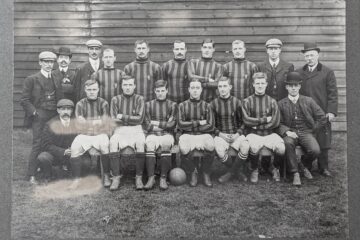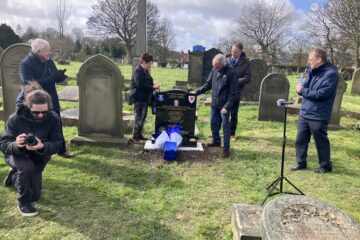Evertonians are justly proud of their heritage, and as it has been with Goodison, so it will be with Bramley-Moore Dock. As it celebrates its 170th anniversary this year, what are the origins of the site of Everton’s proposed new stadium?

The dock takes its name from John Bramley-Moore (pictured), who was born in Leeds in 1800. As a young man he went out to South America, spending several years as a merchant in Rio de Janeiro. By 1830 he was clearly upwardly mobile, marrying Seraphina Hibernia, the daughter of William Pennell, British consul-general for Brazil. In 1835, Bramley-Moore was back in Liverpool, quickly building on his mercantile endeavours, and entering local politics. By 1841 he was elected to the town council, and also became a member of the Dock Committee (forerunner of the Mersey Docks and Harbour Board), of which he was elected chairman the following year. This gave him considerable power over dock administration, especially as he could also influence the town council.
The Albert Dock construction scheme was completed under his watch in 1846, and with powers granted by the great Dock Act of 1844, plans to develop the north docks were put in place. With dock engineer Jesse Hartley overseeing the project, Bramley-Moore ensured the purchase of the foreshore from Lord Derby, and secured funding through the Town Council. Five docks opened simultaneously – Stanley, Collingwood, Salisbury, Nelson, with the most northerly at Bramley-Moore on 4 August 1848. By November, Bramley-Moore was elected Mayor.

Initially, Bramley-Moore Dock served the largest steamships of the period, but this was short-lived once the larger docks to the north were constructed. Instead, the dock became a coaling station, both bunkering vessels and loading exports. A high-level railway was constructed on the dockside in 1857 to enable easy transfer of the coal from the trucks, which was fed by a spur from the Lancashire and Yorkshire Railway line across the dock road. A new bridge, which could be raised or lowered hydraulically to allow the passage of large loads beneath, carried the line over the main road. However, it became an obstacle during the construction of the Overhead Railway, resulting in the track having to drop to ground level, before rising again on the other side.
As the dependence on coal for powering vessels diminished and the export trade also collapsed, the line closed in 1966 and all coal operations had ceased by 1988.

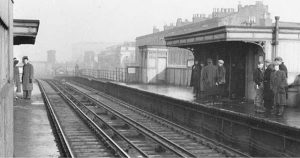
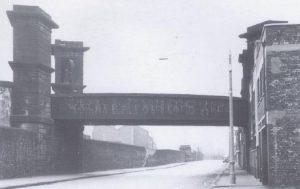


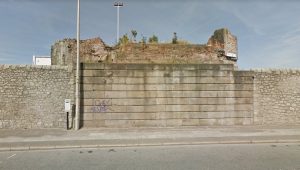

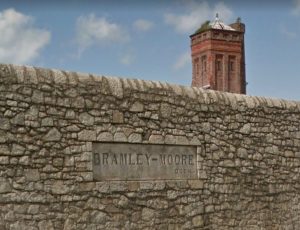
Today, little remains of the structures – the high-level track has gone, as has the road bridge, although the abutment can still be seen above the dock wall. The brick-built hydraulic accumulator tower, which provided power to the dock gates and lifting equipment, is still in situ, as is the dock road perimeter wall, both of which are Grade II listed, and should be accommodated in some form in the new plans.
As for John Bramley-Moore, he spent his later years living in Buckinghamshire and died in Brighton on 19 November 1886 aged eighty-six. He was buried at St.Michael’s-in-the-Hamlet, in Aigburth.

Mike Royden, Everton FC Heritage Society
[This article originally appeared in the Everton v W.B.A. Matchday Programme, 20 January 2018]



